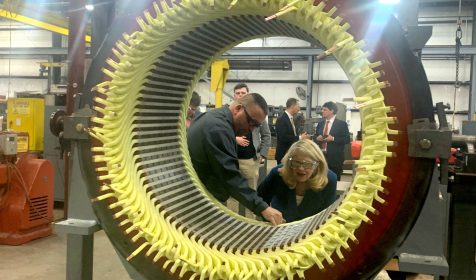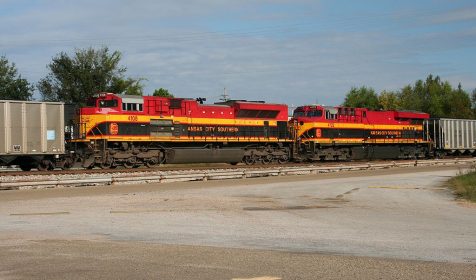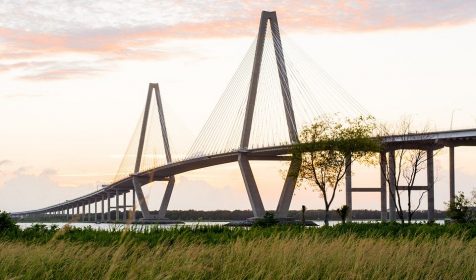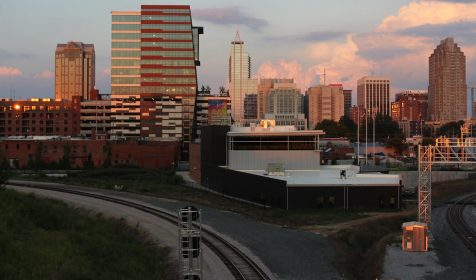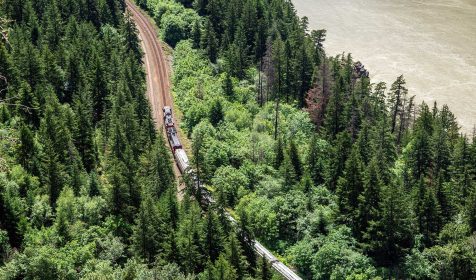What began in Baltimore in 1827 and was connected with a golden spike in 1869 at Promontory Summit, Utah is now the world's most efficient, cost effective and reliable freight rail system. Railroads are the backbone of today's economy, carrying 40% of intercity freight volume, moving one-third of all U.S. exports, and sustaining more than 1 million jobs nationwide.
There’s the Kansas intermodal facility that supports thousands of local jobs; the California vineyard that uses rail to decrease its carbon footprint; the once-shuttered shingle factory in Ohio that is now a booming transload facility; the New York rail supplier able to produce innovative safety technology because of rail investments; the port facilities across the nation providing American consumers with the goods they use every day — all sustained by freight rail.
Download the GoRail White Paper for more on how freight is moving the economy, mitigating pollution and keeping communities safe.
Powering the Economy
Railroads are the steady, quiet backbone of the American economy — running day and night to deliver the goods that we rely on every day. The best part of this story? Freight railroads are privately owned and pay their own way with little help from taxpayers.
All told, freight railroads have spent $780 billion in private funds on the American freight rail network since 1980. These massive investments ripple throughout the economy, supporting millions of jobs as well as enhancing the infrastructure that connects U.S. industry to the global market.
Plus, maintaining good rail is expensive. The large Class I railroads typically reinvest into their infrastructure at six times the rate of the average U.S. manufacturer. With freight movements projected to increase 30% by 2040 according to the U.S. Department of Transportation, it is crucial that railroads are free to reinvest at high levels that keep pace with demand.
Environmental Impact
It's easy to see why railroads are so green given their scale. Just a single train can carry the freight of several hundred trucks while at the same time being four times more fuel-efficient. This efficiency means that moving freight by rail rather than truck reduces greenhouse emissions by an average of 75%. Plus, more freight moved by rail means less congestion on our highways.
Railroads are not relying on their scale alone when it comes to sustainability, however. Investments into fuel-efficient locomotives, new idling reduction technologies, advanced software for routing and train speed and other innovations are making freight rail greener every day. In 2021 alone, U.S. freight railroads consumed 790 million fewer gallons of fuel and emitted nearly nine million fewer tons of carbon dioxide than they would have if their fuel efficiency had remained constant since 2000.
Safety and Community Planning
Railroading culture hinges on safety. From massive network investments and strict operating procedures to first responder training and innovative safety technologies, America's railroads strive every day to make a safe mode of transportation even safer. And these ongoing efforts have had real results: Class I railroads’ mainline accident rate is down 49% since 2000. Grade crossing accidents have also declined 83% over the last 50 years.
Safety advances are rooted in strict operating protocols governing train speeds, locomotive operation and inspection procedures to name a few. Innovations like multidimensional ultrasonic technology, drones and positive train control, or PTC, further aim to enhance operations. It's also important to remember that strict government regulations guide railroad safety practices in all areas, including equipment design, security procedures and inspections.
Dedicated to the communities through which they travel, freight railroads work directly with first responders and local officials on emergency response planning and training. More than 20,000 first responders receive hands-on training each year through individual railroad efforts and industry programs like the Security and Emergency Response Training Center (SERTC) in Pueblo, Colorado. Railroads also have a mobile app for first responders called AskRail that can be used to access the contents of a railcar in the event of an emergency.
Join Our Campaign
Help spread the word about the freight railPolicymakers in Washington, D.C., need to hear from their constituents about the importance of freight railroads to their communities. To join our campaign to educate members of Congress and the public, contact the GoRail State Director for your state.


